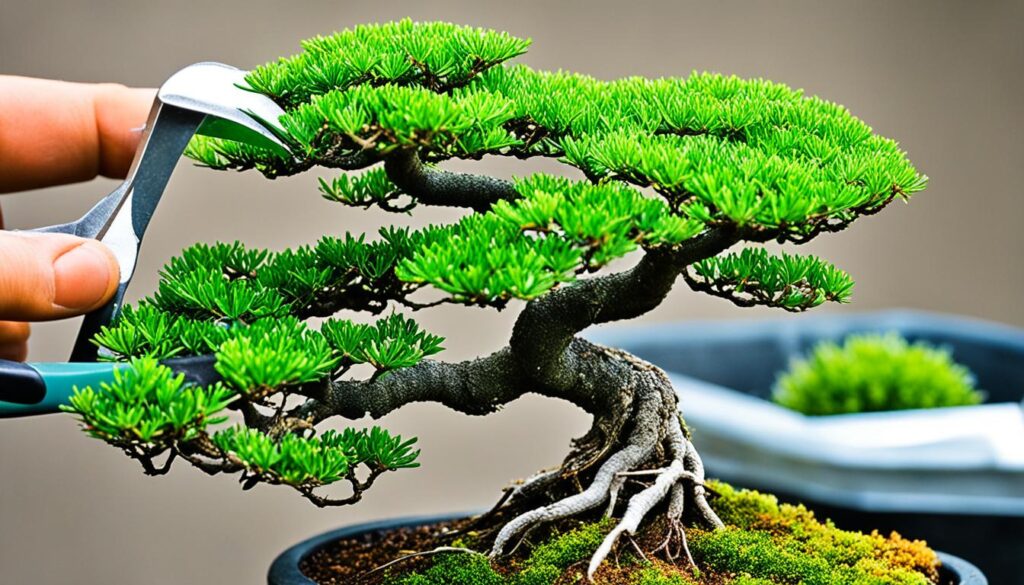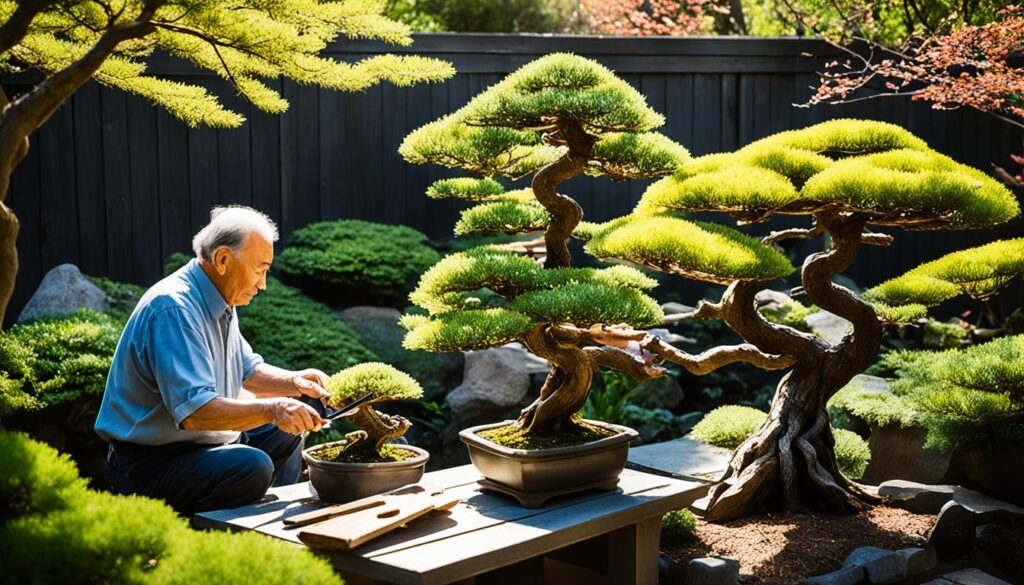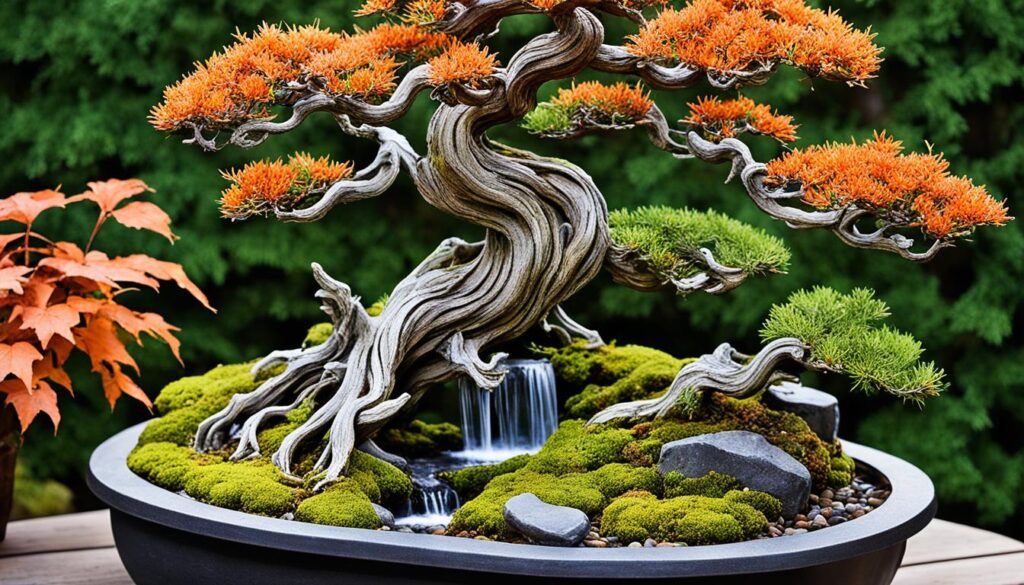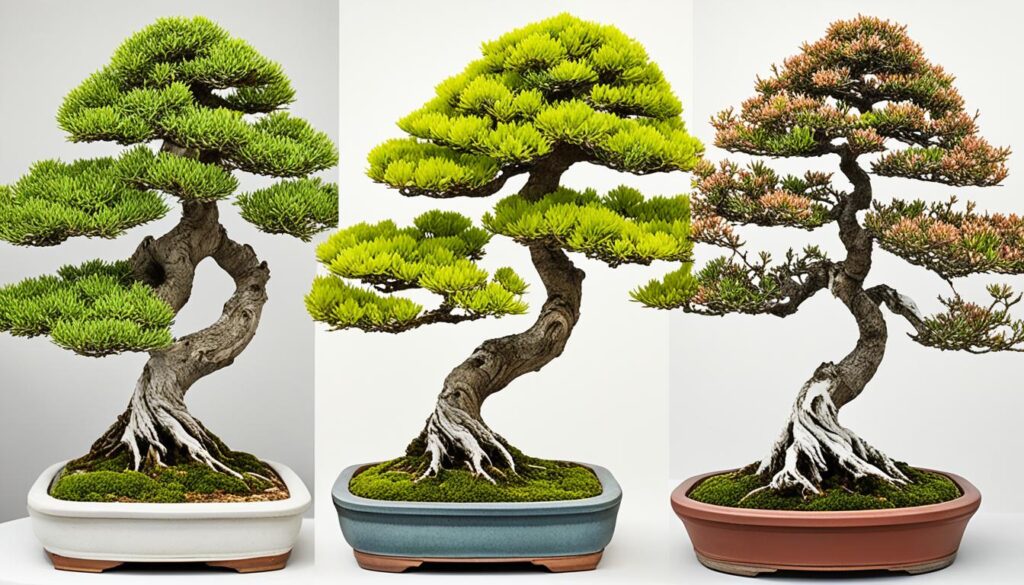Bonsai trees, renowned for their captivating beauty and meticulous craftsmanship, have enchanted enthusiasts for centuries. One of the most frequent inquiries among bonsai aficionados is centered around the longevity of these living artworks. This article will explore the crucial elements that shape the lifespan of bonsai trees and offer valuable insights into caring for your bonsai to ensure a prolonged and vibrant existence.
The lifespan of bonsai trees can vary significantly, depending on a variety of factors, including the species, overall health, and the level of care and maintenance provided. While some bonsai may thrive for decades, others may have a relatively shorter lifespan. Understanding the nuances of bonsai longevity is essential for enthusiasts who wish to cultivate and cherish these captivating living works of art for generations to come.
Whether you’re a seasoned bonsai enthusiast or a newcomer to the art, growing bonsai trees indoors or outdoors, this article will delve into the key factors that contribute to the lifespan of bonsai trees and offer practical tips to help ensure your bonsai’s longevity.
Key Takeaways
- Bonsai trees can live for decades, with some specimens reaching over a century old.
- The lifespan of a bonsai tree is heavily influenced by its species, overall health, and the level of care and maintenance it receives.
- Proper watering, sunlight exposure, pruning, and fertilization are essential for promoting the long-term viability of a bonsai.
- Coniferous bonsai trees, such as pines and junipers, typically have longer lifespans compared to deciduous species.
- Carefully selecting a suitable bonsai species and providing the right environmental conditions are crucial for maximizing its lifespan.
What is Bonsai?
Bonsai, originating from the Japanese term “tray planting,” is an ancient art form that involves nurturing miniature trees in shallow containers or pots. With roots dating back over a thousand years, the practice of bonsai has its origins in China and was later refined in Japan. Bonsai trees undergo meticulous pruning and shaping to maintain their diminutive stature while mirroring the proportions and aesthetics of their full-sized counterparts in nature.
Ancient Art of Miniature Trees
The art of bonsai has been practiced for centuries, with its origins tracing back to ancient China. Over time, this captivating craft was refined and perfected in Japan, where bonsai enthusiasts have honed their skills to create exquisite miniature masterpieces that evoke the essence of their larger counterparts in the wild.
Origins of Bonsai in Japan
The Japanese have long been enamored with the art of bonsai cultivation, and their contribution to this ancient practice is undeniable. Through their dedication to precision, attention to detail, and deep reverence for nature, Japanese bonsai enthusiasts have elevated the craft to an art form, producing stunning miniature trees that captivate audiences worldwide.
Factors Influencing Bonsai Longevity
The longevity of bonsai trees is directly correlated to a variety of factors, each playing a crucial role in the overall lifespan and health of these captivating living artworks. By understanding the key elements that shape a bonsai tree’s existence, enthusiasts can proactively address them and cultivate their cherished specimens to thrive for decades or even centuries.
Bonsai Tree Species
The species of a bonsai tree is a critical factor in determining its longevity. Coniferous varieties like pine and juniper often enjoy longer lifespans, with some specimens living for over a century, compared to deciduous species such as maple and cherry, which typically have a slightly shorter lifespan ranging from several decades to a century.
Overall Health and Vitality
The overall health and vitality of a bonsai tree significantly influence its lifespan. A well-maintained and healthy bonsai tree is more likely to thrive over the long term, while neglect or poor care can lead to a diminished lifespan. Factors such as pest infestations, disease, and environmental stresses can all contribute to a bonsai’s declining health and longevity.
Proper Care and Maintenance
Ensuring that a bonsai tree receives the proper care and maintenance is fundamental to sustaining its health and longevity. Aspects such as watering, sunlight exposure, fertilization, and regular pruning must be carefully calibrated to meet the specific needs of the bonsai species. By providing the right balance of care, enthusiasts can significantly extend the lifespan of their cherished bonsai trees.
| Factor | Impact on Bonsai Longevity |
|---|---|
| Bonsai Tree Species | Coniferous varieties like pine and juniper often enjoy longer lifespans compared to deciduous species. |
| Overall Health and Vitality | A well-maintained and healthy bonsai tree is more likely to thrive over the long term. |
| Proper Care and Maintenance | Carefully calibrated aspects of care, such as watering, sunlight exposure, fertilization, and regular pruning, are fundamental to sustaining bonsai tree health. |
Role of Pruning and Training

Pruning and training are foundational aspects of bonsai cultivation. Accurate and timely bonsai pruning techniques and training are instrumental in shaping the bonsai, controlling its growth, and fostering the desired aesthetics. Consistent and skillful pruning can extend the lifespan of a bonsai tree by stimulating healthy growth while thwarting issues such as overcrowding and disease.
Techniques for Shaping Growth
For most trees, pruning two to four times a year is recommended to maintain their shape and encourage even growth distribution. Bonsai training methods often involve pinching by hand, rather than cutting with scissors, for pine trees and certain conifers to avoid brown or dead foliage at the cut sites. Defoliation, a bonsai pruning method, involves removing leaves during the summer to stimulate new growth and reduce leaf size, enhancing ramification.
Promoting Healthy Development
Structural bonsai pruning typically involves pruning large branches to shape the tree, with the best time for this practice being early spring or late autumn, varying by tree species. Pruning up to 1/3 of a tree’s foliage is generally well-tolerated by healthy trees, but experts recommend avoiding significant root cutting or repotting immediately after a major pruning session to allow trees to recover adequately.
Using special concave cutters for pruning thick branches can reduce scarring effects, while applying cut paste to large wounds protects against infections and speeds up the healing process. Proper pruning techniques and training are crucial in maintaining the health and longevity of bonsai trees.
Environmental Considerations
The ambient environment in which a bonsai tree is situated profoundly impacts its longevity. Factors encompassing temperature, humidity levels, and air quality are pivotal in the tree’s overall health and ultimate lifespan. Offering an environment that emulates the native habitat of the specific tree species is paramount for its well-being.
Ideal Climate Conditions
Bonsai trees thrive in environments that closely match their natural habitats. For instance, coniferous bonsai trees like pines and junipers require full sun and well-drained soil, while deciduous bonsai trees like maples and elms prefer partial shade and moist, but not waterlogged, soil. Maintaining the right temperature range of 60-80 degrees Fahrenheit and adequate humidity levels are also crucial for the health and longevity of bonsai specimens.
Indoor vs. Outdoor Environments
While temperate bonsai trees may not survive well indoors, tropical bonsai plants can be successfully grown indoors if they are provided with the necessary light and humidity. Outdoor bonsai cultivation offers the advantage of exposing the trees to the natural elements, which can contribute to their overall hardiness and longevity. However, outdoor bonsai may require additional protection from extreme weather conditions, such as harsh winters or intense sunlight, to ensure their continued well-being.
How Long Do Bonsai Trees Live?

The lifespan of a bonsai tree can diverge significantly due to many factors. On average, a diligently maintained bonsai tree can persist for several decades. Remarkably, some bonsai trees have endured for over a century, underscoring the potential for longevity when underpinned by attentive care and consideration.
Coniferous bonsai trees, such as pines and junipers, typically boast extended lifespans, spanning multiple decades and even centuries, while deciduous bonsai trees like maples and elms generally possess slightly shorter lifespans, commonly ranging from several decades to a century.
Certain tree species like bristlecone pines and Giant sequoias have been found to live for thousands of years, while most deciduous trees can live for hundreds of years with proper care. The origins of bonsai trees, whether grown from seed or collected from the wild (yamadori), can also influence the potential age and longevity of the tree.
Care practices, such as watering, fertilizing, pruning, and repotting, play a significant role in the longevity of bonsai trees. Observing the health and vigor of older bonsai trees is essential, as they may require different treatment methods to maintain their longevity. Advanced and refined bonsai trees may need additional protection during winter months to prevent frost damage and maintain their health.
Strategies for Maximizing Lifespan
To maximize the lifespan of your cherished bonsai tree, adopt these essential strategies:
Optimal Watering Practices
Maintain a consistent and appropriate watering regimen, avoiding overwatering and under-watering. Proper bonsai watering tips are crucial for the tree’s long-term health and vitality.
Adequate Sunlight Exposure
Ensure your bonsai receives the requisite amount of sunlight according to its specific species. Adhering to the bonsai sunlight requirements is essential for robust growth and longevity.
Regular Pruning Regimen
Incorporate routine pruning and training into your bonsai care regimen to preserve its shape and stimulate healthy growth. Proper bonsai pruning and fertilization practices are vital for maximizing lifespan.
Balanced Fertilization
Administer a balanced fertilizer to supply essential nutrients to your bonsai tree. Maintaining a nutrient-rich environment is crucial for the tree’s long-term how to extend bonsai lifespan.
Vigilance Against Pests and Diseases
Conduct regular inspections to detect any signs of pests or diseases and take expedient measures to prevent infestations or apply treatments as needed. Proactive vigilance is key to ensuring your bonsai’s continued health and longevity.
Caring for Aged Bonsai Trees

As your bonsai collection becomes older and more refined, you’ll need to be more conscious of the care requirements these advanced trees require. The older a tree becomes, the less vigorously it will grow, making it more susceptible to damage from poor repotting techniques or handling. To bring back some strength to your old bonsai tree, it can help to repot it into a wooden box for a couple of years, choosing one that is slightly bigger than its current container.
Repotting Mature Specimens
The extra space to grow, along with the organic relationship between the soil system and the wood of the box, can revitalize your tree and bring it back to its best, helping it to live longer. This technique is particularly beneficial for caring for old bonsai trees, as it allows the root system to rejuvenate and the tree to regain its vigor.
Revitalizing Techniques
In addition to repotting, there are other reviving techniques that can help revive aged bonsai. Pruning selectively, applying specialized fertilizers, and adjusting environmental conditions can all contribute to the overall health and longevity of your mature bonsai specimens. By adopting a proactive approach to the care of your mature bonsai trees, you can ensure they continue to thrive and captivate for years to come.
Varieties with Exceptional Longevity

Among the diverse array of bonsai trees, certain species are renowned for their exceptional longevity. These long-living bonsai tree species captivate enthusiasts with their ability to thrive and endure for centuries, becoming living testaments to the art of bonsai cultivation.
Coniferous Bonsai Trees
Coniferous bonsai trees, such as pines, junipers, and cypresses, are particularly known for their extended lifespans. These long-living bonsai tree species can span multiple decades and even centuries with proper care and attention. The Ficus retusa linn, a bonsai tree residing in the Crespi Bonsai Museum in Italy, is believed to be over 1,000 years old, showcasing the remarkable longevity potential of certain coniferous bonsai varieties.
Deciduous Bonsai Trees
While coniferous bonsai trees often boast the longest lifespans, deciduous bonsai trees like maples and elms can also live for impressive lengths of time when given the appropriate care. These deciduous bonsai trees generally possess slightly shorter lifespans compared to their coniferous counterparts, commonly ranging from several decades to a century. However, with meticulous cultivation and attention, even deciduous bonsai can thrive for many generations, demonstrating the resilience of these living art forms.
Famous Long-Lived Bonsai Specimens

Bonsai trees are created in many ways, and some are cultivated from yamadori, the process of collecting wild trees and planting them into bonsai containers. This method of bonsai creation has the advantage of acquiring an old tree, as many valuable pieces of yamadori are already hundreds of years old when they are collected. Decades of fighting wind, snow, and high winds can create extremely interesting trunklines, branches, and deadwood, which is of course perfect for bonsai.
One of the oldest bonsai trees in the world is the Ficus retusa linn, which is over 1,000 years old and resides in the Crespi Bonsai Museum in Italy. Another notable long-lived bonsai tree is the second oldest, which survived the atomic bomb drop on Hiroshima and is nearly 400 years old, now housed at the U.S. National Arboretum.
Additionally, a 600-year-old bonsai, known as the “Pine of the Phoenix,” stands at an impressive 16 feet tall and 30 feet wide in Japan’s Akao Herb and Rose Garden. An 800-year-old bonsai pine was even sold for an astonishing 1.3 million dollars, marking it as the most expensive bonsai tree to date.
The “Sandai Shogun no Matsu,” a bonsai pine tended by Japanese emperors for over 500 years, is now displayed in the Tokyo Imperial Palace collection. One of the oldest bonsai trees, believed to be nearly 1,000 years old, is housed in the Omiya Bonsai Village in Japan.
A centuries-old cypress bonsai that has been in the same pot for over 200 years can be found at Harvard University’s Arnold Arboretum, showcasing the remarkable longevity of certain bonsai species.
The Rewards of Cultivating Longevity
Bonsai cultivation is an enriching journey that demands ongoing dedication, and with meticulous care and attention, your bonsai can thrive and captivate for generations to come. By understanding and proactively addressing the factors that influence bonsai longevity, you can significantly extend the life of your cherished bonsai. Embracing the wonder of bonsai and the pursuit of nurturing and cherishing these timeless living art forms can be a deeply rewarding experience.
Cultivating long-lived bonsai trees offers a multitude of benefits. Not only do these enduring specimens captivate with their stunning aesthetics, but they also serve as living testaments to your dedication and skill as a bonsai enthusiast. Watching a bonsai tree grow and evolve over the course of decades or even centuries can be a profoundly fulfilling experience, allowing you to forge a deep connection with nature and participate in the preservation of a centuries-old art form.
The longevity of bonsai trees also carries profound significance beyond personal enjoyment. As these living works of art can span generations, they become cherished family heirlooms, passing down the rich cultural heritage of bonsai to future generations. By nurturing and preserving your bonsai collection, you contribute to the ongoing legacy of this ancient practice, ensuring that the beauty and wonder of bonsai continue to be celebrated and appreciated for years to come.
| Bonsai Tree Species | Average Lifespan |
|---|---|
| American Beech | 300 years |
| Bald Cypress | 1800 years |
| Eastern Hemlock | 450-800 years |
| Sugar Maple | 300-400 years |
| Southern Magnolia | 80-120 years |
| White Oak | 300-600 years |
| Pecan | 300 years |
| Black Walnut | 150-250 years |
The benefits of growing long-lived bonsai trees are manifold, encompassing the personal satisfaction of nurturing a living work of art, the preservation of cultural heritage, and the opportunity to create family heirlooms that transcend generations. By understanding the importance of bonsai longevity and prioritizing the care and maintenance of your bonsai collection, you can embark on a truly rewarding and fulfilling journey as a bonsai enthusiast.
Conclusion
The longevity of a bonsai tree is tied to a multitude of factors, including species, health, care, pruning, and environmental considerations. By understanding these factors and proactively addressing them, you can significantly extend the life of your cherished bonsai. Remember, bonsai cultivation is an enriching journey that demands ongoing dedication, and with meticulous care and attention, your bonsai can thrive and captivate for generations to come.
With proper care and maintenance, some bonsai trees can live for decades or even centuries, highlighting the importance of understanding the specific needs of each tree to ensure its longevity. By embracing the wonder of bonsai and embarking on a journey of nurturing and cherishing these timeless living art forms, you can create a lasting legacy that will be admired for years to come.
Key takeaways on growing long-lived bonsai include understanding the ideal climate conditions, implementing a regular pruning regimen, providing adequate sunlight and nutrition, and vigilantly monitoring for pests and diseases. By incorporating these strategies into your bonsai care, you can maximize the lifespan of your cherished trees and enjoy their captivating beauty for many years to come.


